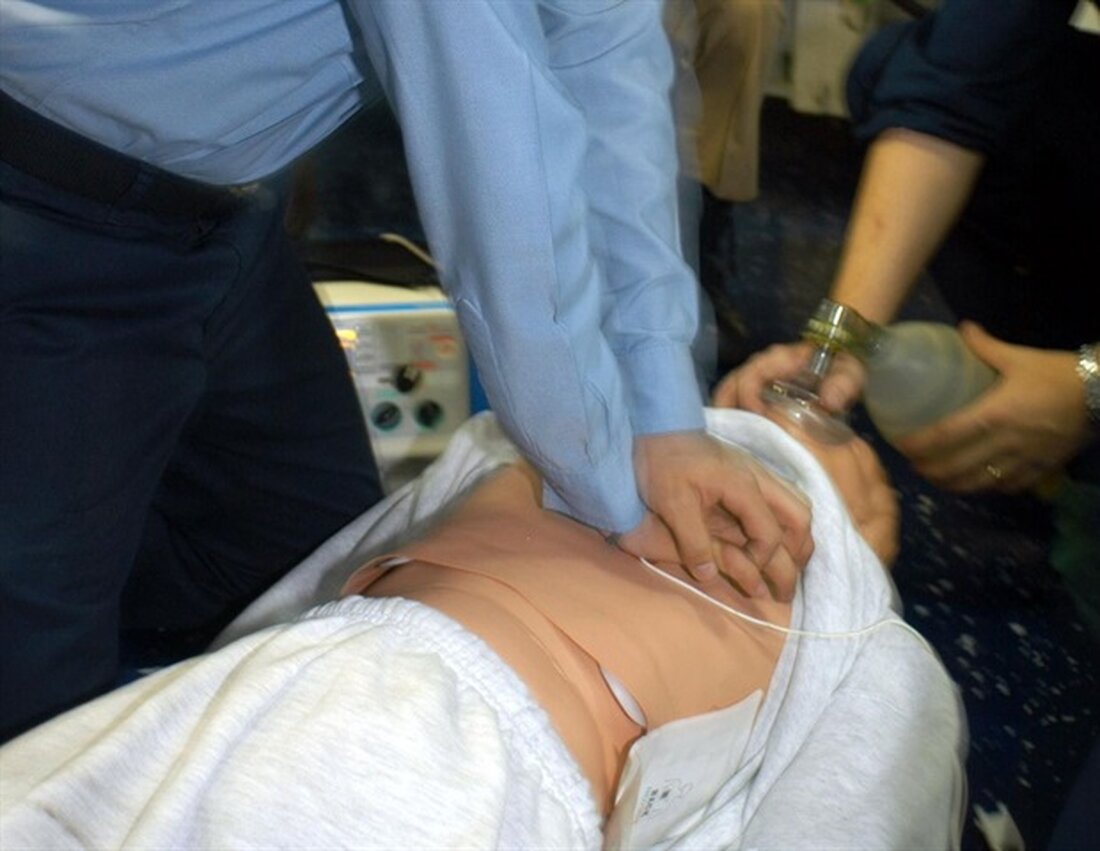Smartphone Code Blue notification can speed response to a hospital cardiac arrest
Sixty seconds can determine the outcome of a Code Blue hospital or cardiac arrest response. New research finds that a hospital code response team rushing to a patient in cardiac arrest arrives at least a minute faster and can also lead to better patient outcomes when using a smartphone emergency code notification system that the team activates through text messages. The results are preliminary research to be presented at the American Heart Association's 2022 Resuscitation Science Symposium. The 2022 meeting will be held in person in Chicago on November 5-6, 2022 and will present the latest advances related to the treatment of cardiopulmonary arrest and life...

Smartphone Code Blue notification can speed response to a hospital cardiac arrest
Sixty seconds can determine the outcome of a Code Blue hospital or cardiac arrest response. New research finds that a hospital code response team rushing to a patient in cardiac arrest arrives at least a minute faster and can also lead to better patient outcomes when using a smartphone emergency code notification system that the team activates through text messages. The results are preliminary research to be presented at the American Heart Association's 2022 Resuscitation Science Symposium. The 2022 meeting will be held in person in Chicago on November 5-6, 2022 and will present the latest advances related to the treatment of cardiopulmonary arrest and life-threatening traumatic injury.
Cardiac arrest is a condition in which the heart's electrical system fails and stops beating. Previous studies examining ways to reduce the rate of in-hospital cardiac arrest have focused on earlier treatments, including defibrillation and epinephrine administration, to improve patient outcomes.
Most hospitals have a code team consisting of specially trained and designated medical professionals who resuscitate patients in cardiac arrest. Code team activation typically begins with a call to the hospital operator, who sends a page to code team members, and a hospital-wide overhead page sometimes invokes a “Code Blue.” There is often a delay when someone recognizes that a patient does not have a pulse until team members receive the code blueprint. Code team members are typically different from the medical team that primarily cares for the patient, and they may not know the patient or have information about their health status or treatments.
In this study, researchers at the University of Maryland Medical Center in Baltimore examined how to improve outcomes and better target patient care by speeding up code care team notification. They electronically mapped coded blue buttons behind each patient bed to a secure smartphone texting system that was also connected to the hospital's electronic medical records. At the push of a button, important patient data such as admission diagnosis and laboratory data are sent to team members' coded smartphones. At the same time, the blue code button contacted the hospital operator, who activated the code team through traditional methods, including overhead pages and pager alerts. The researchers then compared the differences in smartphone SMS activation to the more traditional overhead page announcement of the code, comparing how long each method took to give epinephrine to the patient and the patient's survival rate to hospital discharge.
In this analysis of 35 cardiac arrest events during a three-year period from November 2019 to May 2022 using the smartphone notification system, code team activations were near instantaneous, with notifications received immediately via SMS. Traditional Code Team activation methods took an average of 78 seconds, meaning smartphone activation reduced notification time by over a minute.
Our study shows that technology can be used to speed up our communication processes and that innovations to improve our care systems are still possible.”
Cody Couperus, MD, lead author of the study, a resident in the emergency medicine and internal medicine program at the University of Maryland Medical Center in Baltimore
“Improving notification processes can get code teams to the patient more quickly, armed with knowledge about the patient that can lead to targeted treatments that more efficiently resuscitate the patient,” he said. "Time is of the essence, and the sooner a patient is treated for an underlying cause, the more likely they are to survive without severe brain injury. In the future, we hope to demonstrate that code teams arrive more quickly with this smartphone Code Blue notification system and that more patients survive without severe brain injury."
Other results were:
- Die Smartphone-Code-Blue-Benachrichtigung war der primäre Modus der Code-Team-Aktivierung für mehr als ein Drittel der Herzstillstandsereignisse während des dreijährigen Studienzeitraums.
- Die durchschnittliche Zeit bis zur dokumentierten Epinephrin-Verabreichung für Benachrichtigungen betrug 3 Minuten nach Ankunft des Code-Teams mit der Smartphone-Aktivierung gegenüber 4 Minuten mit dem Standard-Benachrichtigungssystem.
- Das Überleben bis zur Entlassung aus dem Krankenhaus betrug 25 % für Herzstillstandsereignisse für Benachrichtigungen, die mit der Smartphone-Aktivierung aktiviert wurden, verglichen mit etwa 17 %, wenn das Code-Team durch das Standard-Benachrichtigungssystem aktiviert wurde.
Among limitations, the researchers noted that the small number of patients in the study makes it difficult to derive statistically significant conclusions about the effects of the smartphone activation system on patient outcomes and that further studies with larger groups of participants are needed to evaluate the effect.
“Physicians must strongly advocate for quality initiatives to improve rapid resuscitation of cardiac arrest patients in our hospitals,” Couperus said. “Outcomes after pulse loss in the hospital have remained largely stable and poor over the years, and these results suggest that technological innovations could help us do better.”
Source:
.

 Suche
Suche
 Mein Konto
Mein Konto
